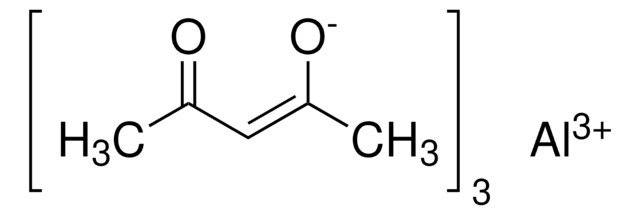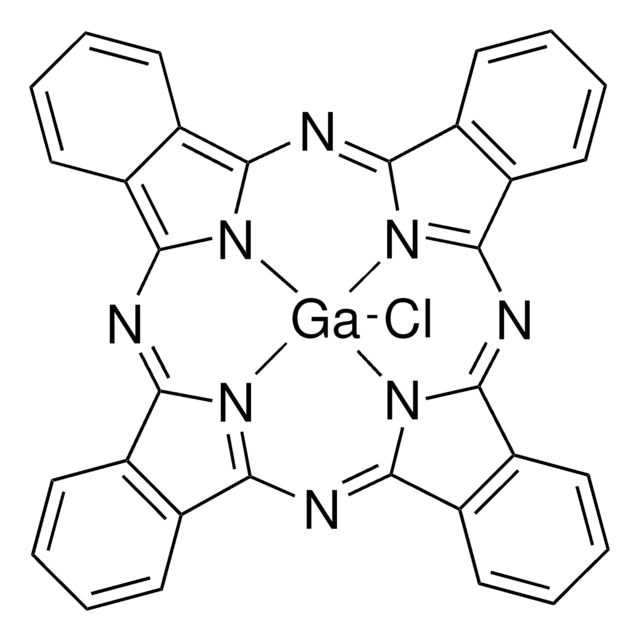Kluczowe dokumenty
393541
Gallium(III) acetylacetonate
99.99% trace metals basis
Synonim(y):
Ga(acac)3, Gallium(III) 2,4-pentanedionate
About This Item
Polecane produkty
Poziom jakości
Próba
99.99% trace metals basis
Postać
solid
przydatność reakcji
core: gallium
reagent type: catalyst
mp
196-198 °C (dec.) (lit.)
ciąg SMILES
CC(=O)\C=C(\C)O[Ga](O\C(C)=C/C(C)=O)O\C(C)=C/C(C)=O
InChI
1S/3C5H8O2.Ga/c3*1-4(6)3-5(2)7;/h3*3,6H,1-2H3;/q;;;+3/p-3/b3*4-3-;
Klucz InChI
ZVYYAYJIGYODSD-LNTINUHCSA-K
Opis ogólny
Zastosowanie
- As a precursor to synthesize nanocrystalline gallium oxide spinels via solvothermal process for various applications like photocatalysis, battery cathode materials and electrocatalysis.
- To fabricate LiGa alloy layer on Li metal anode from in-situ electroreduction. It suppresses the anode dendrite formation in lithium-sulfur batteries.
- To prepare highly efficient gallium-platinum (GaPt3) nanoparticles hot-solvent synthesis which act as electrocatalysts for hydrogen evolution reaction.
- To synthesize γ-Ga2O3 nanocrystals for fabricating electron-transporting layer for perovskite solar cells. It forms effective interfacial connections with the perovskite top layer, enhancing the efficiency of charge transport.
Hasło ostrzegawcze
Warning
Zwroty wskazujące rodzaj zagrożenia
Zwroty wskazujące środki ostrożności
Klasyfikacja zagrożeń
Acute Tox. 4 Dermal - Acute Tox. 4 Inhalation - Acute Tox. 4 Oral - Carc. 2 - Eye Irrit. 2 - Skin Irrit. 2 - STOT SE 3
Organy docelowe
Respiratory system
Kod klasy składowania
11 - Combustible Solids
Klasa zagrożenia wodnego (WGK)
WGK 3
Temperatura zapłonu (°F)
Not applicable
Temperatura zapłonu (°C)
Not applicable
Środki ochrony indywidualnej
dust mask type N95 (US), Eyeshields, Gloves
Wybierz jedną z najnowszych wersji:
Masz już ten produkt?
Dokumenty związane z niedawno zakupionymi produktami zostały zamieszczone w Bibliotece dokumentów.
Klienci oglądali również te produkty
Produkty
Since the demonstration of the first practical solar cell 60 years ago, research on novel materials, improved solar cell design and structure, and innovative manufacturing processes have all contributed to a continuous increase in the efficiency of photovoltaic (PV) devices.
Nanomaterials are considered a route to the innovations required for large-scale implementation of renewable energy technologies in society to make our life sustainable.
Nasz zespół naukowców ma doświadczenie we wszystkich obszarach badań, w tym w naukach przyrodniczych, materiałoznawstwie, syntezie chemicznej, chromatografii, analityce i wielu innych dziedzinach.
Skontaktuj się z zespołem ds. pomocy technicznej












